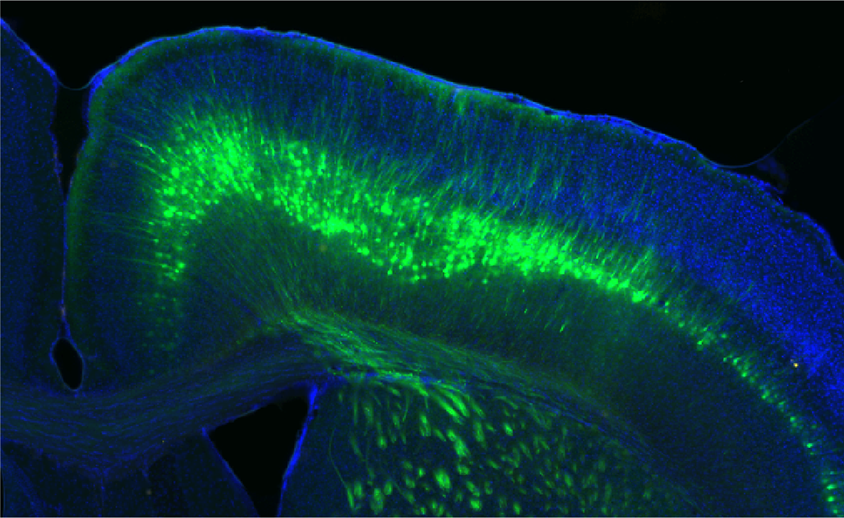
THIS ARTICLE IS MORE THAN FIVE YEARS OLD
This article is more than five years old. Autism research — and science in general — is constantly evolving, so older articles may contain information or theories that have been reevaluated since their original publication date.
A mutant virus that infiltrates neurons and delivers genes to the nucleus can illuminate long-range connections in the brain1.
Neurons that connect distant brain areas are necessary for coordinating complex behaviors. Researchers can trace their paths in laboratory animals using so-called recombinant adeno-associated viruses (rAAVs), which can carry the genetic blueprints for fluorescent proteins. These viruses travel up the neurons’ long tendrils, called axons, and hack into the nucleus to splice genes into the cell’s DNA.
However, available versions of this virus may not travel through axons efficiently. And even if they deliver their genetic cargo, the neurons may only weakly express the genes. The infection can also damage or kill some neurons.
In the new study, researchers created a mutant virus that can safely manipulate neurons into expressing large amounts of the DNA it carries. They described the virus 19 October in Neuron.
To find the virus, the researchers screened a library of roughly 10 million versions of rAAVs, each with a unique mutation. The screening process involved injecting each mutant into multiple regions of the brains of mice, and selecting the most effective versions.
After several rounds of selection, the researchers identified 17 viruses capable of carrying genetic cargo up a long axon without harming the neuron. They used each virus to deliver a green fluorescent protein to two brain regions and picked the virus that generated the brightest glow.
The researchers modified the winning virus, dubbed rAAV2-retro, to make neurons glow green only when they fire. After the researchers injected it into the brains of living mice, they could watch firing neurons light up through a window in the rodents’ skulls.
The virus can also deliver the gene-editing tool CRISPR to cells. The researchers used this approach to switch off a red fluorescent protein in neurons in the brains of mice engineered to express the protein.
By joining the discussion, you agree to our privacy policy.